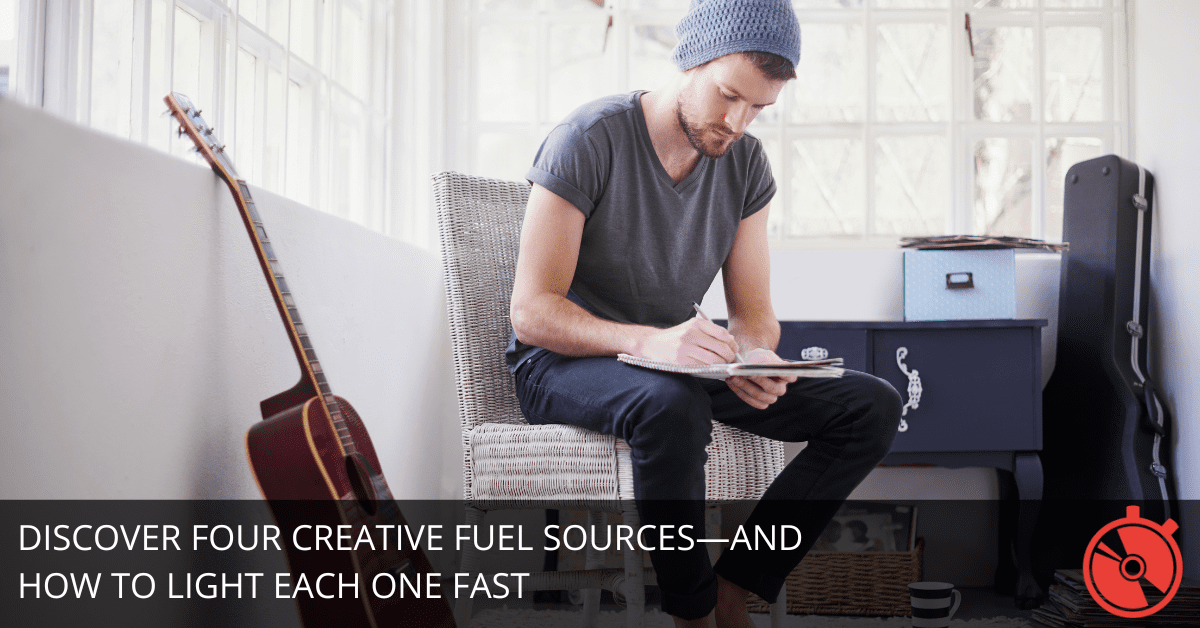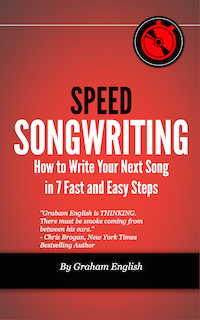
Let’s get something straight: waiting for inspiration is a trap.
You don’t find inspiration. You create the conditions that make it impossible not to write.
And to do that consistently, you need to know what kind of inspiration you’re looking for—and how to summon it on command.
There are four main types of songwriting inspiration that drive creative breakthroughs. Each speaks a different emotional language and responds to a different kind of prompt.
Here’s how to recognize them—and more importantly, how to activate them whenever you need a song to show up and show out.
1. Emotional Inspiration
This is the heart punch. The breakup. The homecoming. The lonely train ride with nothing but your headphones and that weird ache in your chest.
Emotional inspiration is powerful, but it can also be unreliable if you wait for life to give you dramatic moments.
Instead, here’s what to do: Evoke the emotion, then write from it.
To get started, follow these 3 steps to access emotional inspiration:
- Name the emotion you want to explore. Not just “sadness,” but something more specific—like regret, nostalgia, or guilt.
- Recall a concrete memory that made you feel that emotion. Get detailed. Where were you? What did it smell like? What song was playing in the background?
- Write a single sensory line from that moment. Something like, "The screen door slammed behind you, and I counted the seconds like prayers."
That one sentence? It’s your songwriting seed. Build your melody and chords around the feeling of that line.
Emotional inspiration lives in specificity. Don’t write “I was sad.” Write the moment the car pulled away.
2. Musical Inspiration
Sometimes the lyrics aren’t ready, but your hands are already talking.
A chord progression. A drum groove. A random arpeggio you played without thinking. That’s musical inspiration calling.
To tap into this type of inspiration, you need frictionless tools and zero judgment.
Here’s what to do next:
- Set a timer for 10 minutes.
- Grab your instrument or open your DAW. Don’t think—just play. Try to follow instinct, not intention.
- Record everything. Use Voice Memos or hit record in Logic. Don’t stop to tweak. Capture the moment as it is.
Now listen back. Pick the most interesting 4 bars. Loop them. Ask: What story does this music want to tell?
Musical inspiration often bypasses the brain and speaks straight to your subconscious. Let it lead—then build the lyrics around its mood.
For example, if the chords feel weightless and dreamy, maybe your lyric explores daydreams or longing. If the beat is sharp and percussive, maybe you’re writing about tension, confrontation, or control.
Music first? That’s a green light. Follow it.
3. Conceptual Inspiration
This one starts with an idea. A clever phrase. A what-if question. A song title that won’t leave your brain alone.
Think: “The Most Punchable Face in the History of Faces.”
You know there’s a story there. The title alone demands a song.
To trigger conceptual inspiration, you need a well-stocked idea pantry. Start here:
- Write down every weird, funny, or powerful phrase you overhear. “I’m not mad, I’m just disappointed” is a concept begging for a verse and chorus.
- Use opposites or contradictions. “Beautiful disaster.” “Silent scream.” Tension = intrigue.
- Scroll through headlines, song titles, or poetry. Ask: What’s missing? What twist could I add?
Then test it. Say the title out loud like it’s the chorus of a hit song. Does it feel like something a crowd would scream back to you?
Conceptual inspiration is especially strong when paired with metaphor. For instance:
A song about a sinking ship = a failing relationship.
A song called “No Reception” = a breakup where the silence says everything.
Your brain’s full of metaphors. Open the tap.
4. Environmental Inspiration
Sometimes, you just need to get out of your own damn way. That means changing your surroundings.
If you’re always writing in your bedroom with the same keyboard, same lighting, same air—it’s no wonder your ideas feel stale.
Here’s how to shake it up:
- Change locations. Try a park bench, your car, a different room, or a local café. Don’t underestimate the power of new visuals and background noise.
- Use different tools. If you usually write on your laptop, switch to pen and paper. If you always start with chords, start with a beat.
- Set a time-based limit. Give yourself 15 minutes to write something wherever you are. Use the environment as your prompt.
Let’s say you’re sitting in a laundromat. The hum of machines becomes your rhythm. The smell of detergent becomes your metaphor for trying to clean up a messy relationship. Boom—you’re off and running.
Environmental inspiration works because your senses are activated. You stop thinking and start noticing. And that’s where the best songs live.
Bringing It All Together
You don’t have to wait for the muse to strike. You invite her through action.
Want a simple template to kick off a writing session using any of the 4 inspiration types?
Here you go:
“Today I’m going to write a song based on [emotion/melody/concept/environment]. I’ll give myself [time limit], and I’ll use [specific tool or technique] to get started.”
Here’s what that looks like in real life:
“Today, I’m going to write a song based on nostalgia. I’ll give myself 30 minutes and use a looped piano riff I just recorded to get started.”
Or:
“Today I’m going to write a song inspired by the phrase ‘unpaid therapist.’ I’ll start with pen and paper and write 3 verses of story-driven lyrics in 25 minutes.”
Treat inspiration like a muscle, not a mystery.
The more you train it, the stronger—and more reliable—it gets.
So quit waiting. Go make something. The muse shows up after you do.

Enter your first name and email address below and click “GET ACCESS NOW!” to get the Speed Songwriting Cheat Sheet delivered to your inbox!
We guarantee 100% privacy. Your information will not be shared.

Emotional inspiration is my favorite. It helps me buy into a song when I can feel it at a deep level. That makes recording and performing more genuine and helps to connect to others. And if it’s not my initial inspiration, it’s still the best dynamo to keep my creative process on track.
Totally agree. Emotion is the engine that keeps everything moving. When you feel it, the audience does too. Thanks for sharing this!